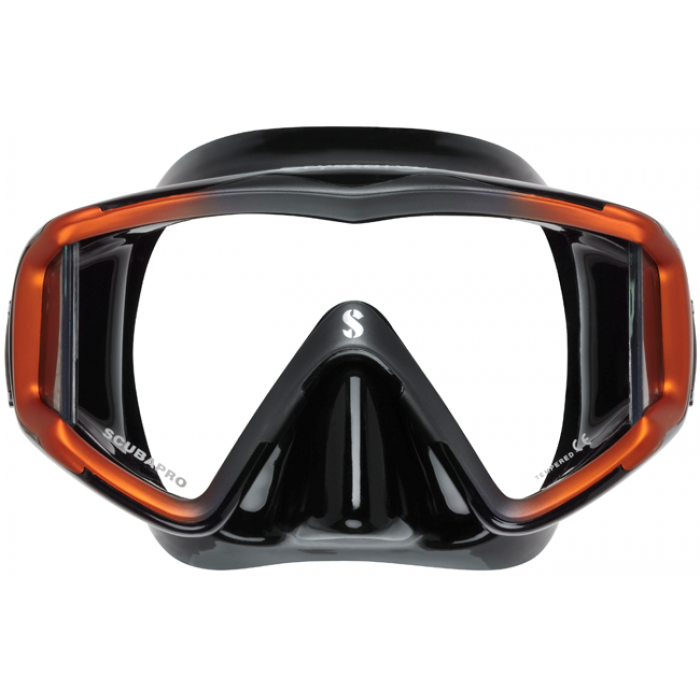There is nothing worse than an ill fitting mask. It will either leak or be uncomfortable. So here are a few tips to help you choose a mask.
Scuba or Free Diving?
With scuba we have plenty of air to equalise our masks with and clear any leaks, but for a free diver you are limited to just the one lungful and you don’t want to waste it on equalising your mask as you dive down. So for free divers, a lower profile mask is very important.
Firstly we want to see how good a fit it is.
If it doesn’t fit well, then it’s no good. That’s why we have so many on our wall as we have different shaped faces.
Get your hair out of the way of where the mask will sit, next get the mask strap out of the way.
Place the mask against the face and breathe in through your nose. This should cause the mask to stick to your face. If it doesn’t, try another. Make sure the skirt hasn’t folded over.
With the mask stuck on your face, continue to breathe in through your nose and gently pull the mask at the frame to see how hard it is to pull off. The more force it takes, the better seal you have; therefore less likely to leak.
OK next is comfort.
Gently push against the frame of the mask whilst it is on your face.
It should not touch your face. This is mimicking the water pressure pushing the mask against your face.
If this stage gets missed, then you may have a mask that makes you sore or leave a red mark or dent where it has been pressing.
OK found a couple that fit well. Next is best Field of Vision.
Stand in one spot with a mask on, you can use the strap. Without turning your head, note what you can see. Then do the same with any other masks that fit.
Choose the mask that you can see most out of.
There may be some colour options available.
Do you use glasses or contacts?
For some masks, we can get a limited range of optical lenses.
We can also have some prescription lenses made & glued into your mask. This is a great option for full & half lenses for reading your computer and gauges.
Tips
Black or Clear skirting?
Clear allows more light in.
Black is like wearing a sun hat, it reduces glare. Some feel it is a bit tunnel vision.
Black hides the grime that even with cleaning builds up on the silicone with time and usage.
Straps
The strap should sit on the back of your head, not the top. Incorrect position can cause the mask not to seal properly.
Do not over tighten, it should just sit firmly against your face.
Carry a spare strap in your spares kit.
Neoprene Slap straps
Are more comfortable than silicone straps and don’t pull your hair so much.
They are more reliable than silicone.
New masks and fogging.
New masks have a layer of silicone on the inside of the lens left over from the manufacturing process that needs to be removed before use. Otherwise your mask will constantly fog up.
We Sell McNett’s Sea Buff that is designed for this. White toothpaste also works.
Before jumping in, good old fashion spit on the inside of the lens whilst they are dry can work as an anti-fog; “The greener the cleaner.”
Alternately we sell McNett’s Sea Drops that replaces the spit option. Baby shampoo also works. Anything that won’t sting the eyes can be used.
If your face is hot and the water is cool, splash your face to cool it down before putting the mask on will also reduce fogging.
Build up of grease and some anti fog solutions will need to be removed periodically, so go back and use the Sea Buff/white toothpaste.
Other things
Remember when diving to equalise into the mask by breathing out through your nose.
When clearing a mask of water, do the same as this will push they water out.
Try to avoid breathing out of your nose instead of the regulator as it can increase the chance of mask fogging.
